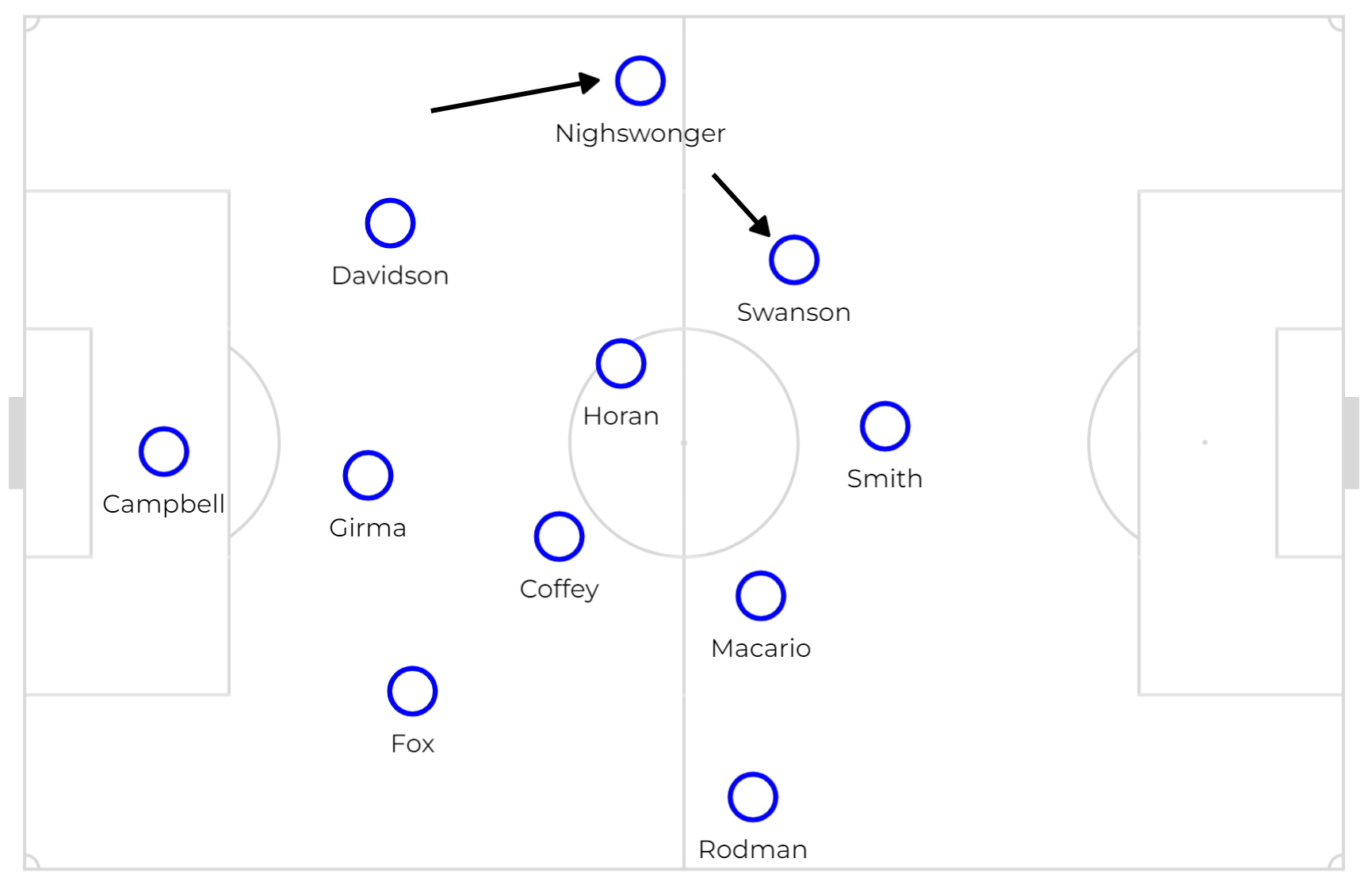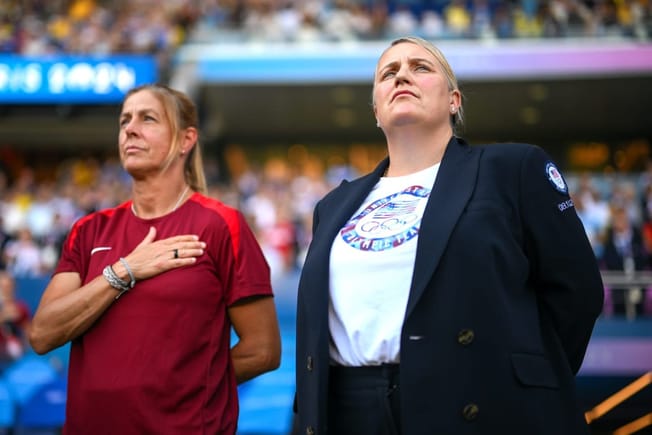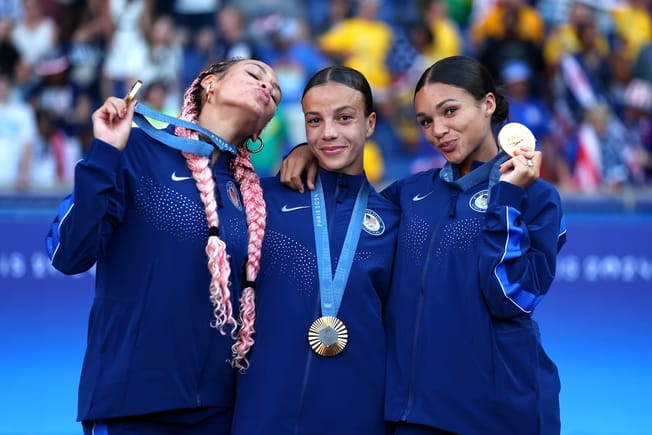Emma Hayes took charge of the United States women’s national team for the first time for their two friendlies against South Korea. Sure, the 4-0 and 3-0 wins were expected. But the performances underpinning the results were reassuring and highlighted some intriguing tactics ahead of the Olympics next month.
Let’s dive into Hayes’ approach, shall we?
3-4-3 is Hayes’ attacking shape
The U.S. spent plenty of time in a 3-4-3 attacking shape in the last six months under Twila Kilgore, who served as the interim manager before becoming an assistant on Hayes’ staff.
That 3-4-3 theme continued in Hayes’ first two games in charge.
One fullback stayed deep (Emily Fox to start on Saturday and Casey Krueger to start on Tuesday), forming a three with the center backs, while the other (Jenna Nighswonger on the left to start both games) pushed down the flank and offered width. This led to one of the nominal wingers drifting infield (Mallory Swanson or Jaedyn Shaw on the left) while the other stayed wide (Trinity Rodman or Crystal Dunn on the right).
Here’s a basic overview of the setup:

The most fascinating element of this attacking shape is that it enables Hayes to field two attacking midfielders.
By tucking inside offensively, the left ‘winger’ isn’t really a winger at all, but another No.10. This position group is currently the most stacked of all – between Shaw, Catarina Macario, Rose Lavelle, Crystal Dunn, Lindsey Horan, the options go on and on and on. When Croix Bethune and Savannah DeMelo don’t make the cut, you know you’re good for creative midfield talent.
South Korea tried to press high at times in the first game, but to little effect. In the second, they more readily dropped into a 5-4-1 mid-block and tried to slow down the hosts. This gave Hayes’ squad plenty of time on the ball to organize their attacking play, get into shape and perform specific rotations in possession. We’ll get to those patterns in a bit.
Jane Campbell, sweeper-keeper
In game one, Hayes selected Jane Campbell as her team’s starting goalkeeper in the absence of the injured Alyssa Naeher.
This was a bit of a surprise, considering Casey Murphy looked to have sealed her spot as first in line to Naeher’s throne. Now, we shouldn’t get too carried away – it was Hayes’ first game in charge, and a friendly against out-matched opposition. But it was easy to see what Campbell brought to the team, and it wasn’t the reflex saves she pulls off so often in Houston.
In the 25th minute on Saturday, Campbell came well out of her penalty area to sweep up a ball over the top of the defense. No more center backs racing back towards their own goal and getting caught for speed, like in the lead-up to Mexico’s opening goal in their 2-0 win over the U.S. in February’s Gold Cup.

Campbell also involved herself in the attacking play, again strolling well out of her area to exchange passes with her backline. This gave the center backs a chance to split a little wider and for the team to become more expansive, opening up new angles for the United States to build out of their own half.






